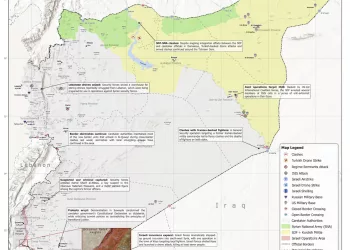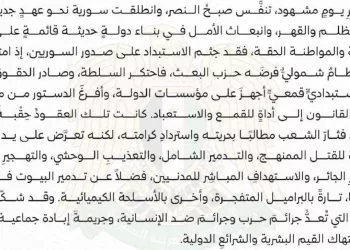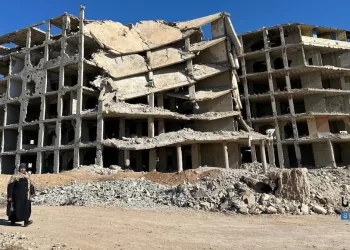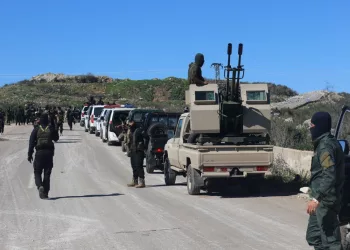The former opposition has dealt massive blows to ISIS’ strength in south Syria as part of an anti-ISIS campaign spanning several weeks that has eliminated senior members of the radical group. Although they were unaware of his presence at the time, a mid-October raid by former opposition forces against an ISIS cell in Jasim killed Abu al-Hasan al-Qurayshi—the head of ISIS—who had been hiding in a stretch of western Daraa ostensibly controlled by the regime. Al-Qurayshi’s death in a former raid that was completely unsupported by the regime and Russia underscores the regime’s poorly managed counter-terrorism strategy, which has allowed south Syria to become an emerging hub for radical activity. Indeed, it is the unsupported former opposition that has launched the most successful wave of anti-ISIS operations in Daraa province, engaging with ISIS-linked cells in Daraa city and its surrounding countryside. While security conditions remain exceedingly poor, south Syria faces its worst fuel shortage in recent memory following the regime’s slashing of fuel allotments to communities in the south. Transportation, shipping and even military operations are now exceedingly difficult due to the worsening shortages, which have brought movement in the province to a virtual halt.
Attached Map: Recent Developments in South Syria – 2nd December 2022
(For a high-resolution version of this map, please use the form at the bottom of the page)
Recent Developments
- ISIS leader confirmed dead: Official ISIS social media channels announced the death of the radical group’s leader, Abu al-Hasan al-Qurayshi, following a raid weeks before by former opposition forces in Jasim (30.11). The announcement was followed by a statement by US CENTCOM officials confirming that al-Qurayshi was killed during clashes between former opposition groups and ISIS cells in mid-October. Al-Qurayshi’s presence in an area purportedly under regime control underscores the failed counter-terrorism strategy imposed in south Syria by both the regime and Russia, who have allowed a significant, destabilizing ISIS presence to grow in south Syria. Moreover, the fact that it was the former opposition—not the regime—who ultimately neutralized al-Qurayshi reveals the regime’s indifference and failure to secure local stability by countering the presence of extremist groups.
- Deadly street fighting: The first week of November saw deadly street clashes that claimed the lives of seven ISIS members and six former opposition fighters, in addition to several civilians and one journalist (30.11-7.11). The clashes mark the heaviest bout of fighting in Daraa al-Balad since the regime’s summer 2021 escalation against the collection of neighborhoods in southern Daraa. An estimated 1,500 civilians have fled clashes in the area.
- Former opposition fights ISIS: South Syria’s former opposition is continuing a weeks-long campaign against ISIS cells in Daraa province, motivated by worsening security conditions and a spate of ISIS-backed bombings and assassinations against community leaders. Prominent former opposition blocs in eastern and western Daraa have both participated in this campaign, which has continued throughout the month of November and resulted in the apprehending of numerous ISIS members in Daraa.
- Bedouin IDPs: Dozens of Bedouin families from rural eastern Suwayda arrived in eastern Daraa as IDPs, with an estimated 70 families departing their home communities as a result of the serious absence of basic services in the area (16.11). The presence of Bedouin IDPs in eastern Daraa has long been a serious concern for local residents, with tensions between Bedouin armed groups and the former opposition sometimes erupting into armed confrontations.
Humanitarian Developments
- Critical fuel shortage: Life in Daraa province is currently paralyzed by a serious lack of fuel, causing reductions in everything from food shipments and service provisions to military movements. The regime reduced fuel rations to civilians by 80% and to the public sector by 50%, while diesel for heating has been entirely cut off to Daraa province—raising serious concerns as residents prepare for the winter.
- Life at standstill: The lack of fuel has meant a cascading collapse of activity in the province, with public and private sector businesses largely forced to close. Fuel reductions have also meant less electricity, with communities in Daraa receiving an average of no more than two hours of electricity per day. The effects on residents are likely to be extreme: more expensive transportation and production will drive up the cost of goods at a time when fewer Syrians are able to work—thus making life yet more difficult for the region’s most vulnerable.








